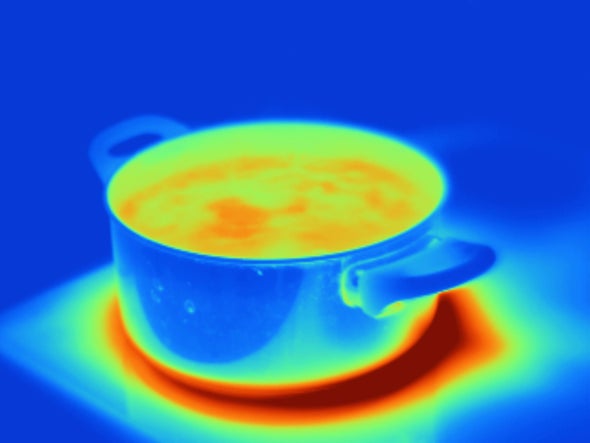(单词翻译:单击)
听力文本
This is Scientific American's 60-second Science, I'm Adam Levy.
Water molecules can arrange themselves to form much larger structures. Take intricate snowflakes, which form all by themselves in the right conditions. Well, now researchers have created some delicate water structures of their own, in the form of microscopic ice mazes, with a little help from light.
The team took some sugar water, and kept it at a temperature where ice crystals and water can happily coexist. They then exposed the H2O to infrared light at a particular frequency that is absorbed much more easily by the ice crystals than it is by the water.
"We thought that something interesting would happen when you illuminate ice which absorb more than water. Because once the ice is melting, then it becomes liquid water and then it absorbs less, so you have kind of a negative feedback situation. And we did not know what will happen with this."
Physicist Ido Braslavsky from the Hebrew University in Jerusalem, Israel. The heating caused by the light melted tiny holes into the crystals. These holes sometimes joined up to form channels, and the researchers watched as a labyrinth-like pattern gradually formed over the course of an hour.

"At some point we suddenly saw a whole spectrum of patterns that appear. There were holes that opened and closed, there were channels that were appearing. And all together we realized that we had found a new phenomenon that was not observed before." The researchers have published their findings in the journal Science Advances.
And cool as all this may sound, there may also be some icy applications for this technique. Defrosting may make you think of microwave ovens, but heating ice with microwaves has some drawbacks. "The microwave actually warms the water but not the ice. So here we have a system in which we warm the ice even more than we warm the water."
And because the shorter wavelength infrared light warms the ice more than the water, the technique could come in handy for carefully unfreezing delicate biological samples that have been kept on ice. Which would be a good thing to see. And to have thaw.
Thanks for listening for Scientific American — 60-Second Science. I'm Adam Levy.
参考译文
这里是科学美国人——60秒科学系列,我是亚当·利维。
水分子可以自行排列成大得多的结构。以复杂的雪花为例,它们都是在合适的条件下自已形成的。现在,研究人员在光的帮助下,创造出了他们自已的微妙水结构,展现形式为微小的冰迷宫。
研究小组取了一些糖水,并将其保持在冰晶和水可以和谐共存的温度下。之后,他们让水接触特定频率的红外线,在这一频率下,冰晶比水更容易吸收红外光。
“我们认为当你说明冰吸收的红外光比水多时,会发生一些有趣的事情。因为冰一旦融化就会变成液化水,之后它吸收的就少了,所以会出现一种负反馈的情况。我们不知道这会发生什么。”
以色列耶路撒冷希伯来大学的物理学家伊多·布拉斯拉夫斯基说到。光引起的加热融化了晶体上的小孔。这些小孔有时会连接起来形成通道,研究人员观察到,在一个小时的过程中,一个迷宫般的图案逐渐形成。
“在某一时刻,我们突然看到了整个系统图案的出现。不仅有开口和闭口的小孔,还出现了一些通道。我们一起意识到,我们发现了一种此前未观察到的新现象。”研究人员在《科学进展》期刊上发表了他们的发现。
这听起来可能很酷,但这项技术可能也有一些冰冷的应用。解冻可能会让你想到微波炉,但用微波炉加热冰有一些缺点。“微波实际上加热的是水,而不是冰。所以现在我们有了一个系统,这个系统加热的冰比水多。”
由于波长短的红外光更多地加热冰而不是水,对于小心翼翼地解冻保存在冰上的脆弱生物样本来说,这项技术可能会派上用场。这将是我们期待看到的好事。同时对解冻来说也是件好事。
谢谢大家收听科学美国人——60秒科学。我是亚当·利维。
译文为可可英语翻译,未经授权请勿转载!
重点讲解
重点讲解:
1. join up (与…)联合;(与…)会合;(与…)组成联盟;
Hawkins joined up with Mick in Malaga, and the two went touring around the countryside.
霍金斯在马拉加和米克会合,然后两个人到乡间游玩去了。
2. all together 一起;全部;
Let's sing 'Happy Birthday'. All together now!
咱们来唱“生日快乐”。现在一起唱!
3. think of 想起;想到;
I just can't think of his name.
我就是想不起来他叫什么了。
4. come in handy 派上用场;
It may come in handy.
这东西迟早会有用处。


